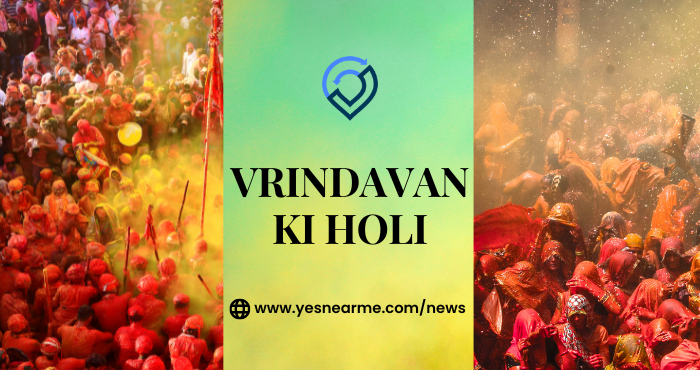
Table of Contents
Vrindavan Ki Holi: A Celebration of Eternal Love and Joy
Holi, the festival of colors, takes on a divine and spiritual dimension in Vrindavan, the sacred land of Lord Krishna and Radha. Here, Holi is not just a day-long event but an eight-day-long grand celebration that immerses devotees and visitors in an ocean of devotion, love, and joy. This festival commemorates the eternal and divine love between Radha and Krishna, embodying the essence of togetherness, forgiveness, and boundless happiness.
The Significance of Vrindavan’s Holi
Unlike elsewhere in India, where Holi is celebrated for a day or two, Vrindavan and the Braj region transform into a spiritual and colorful paradise for over a week. The festival is deeply rooted in mythology, as it is believed that Lord Krishna, known for his playful and mischievous nature, once expressed his concern about his dark complexion in contrast to Radha’s fair skin. To ease his worries, his mother, Yashoda, playfully suggested that he could color Radha’s face in any shade he desired. This act of love and playfulness evolved into the vibrant festival of Holi, where colors symbolize the unity of souls and the breaking down of all social barriers.
The Rituals and Festivities
The first evening of the festival is celebrated as ‘Choti Holi’, where bonfires are lit to symbolize the victory of good over evil. This ritual represents the legend of Holika Dahan, where Prahlad’s unwavering devotion to Lord Vishnu led to the defeat of Holika, signifying the triumph of righteousness.
The following day, ‘Dhulivandan’, marks the beginning of colorful revelries. Devotees and visitors gather in Vrindavan’s temples, streets, and open spaces, smearing each other with gulal (colored powder) and drenching themselves in colored water, recreating the playful Holi of Krishna and Radha. The Banke Bihari Temple in Vrindavan becomes the heart of the celebrations, where Flower Holi (Phoolon Ki Holi) and Lathmar Holi in nearby Barsana and Nandgaon are celebrated with immense enthusiasm.
The Holi celebrations continue across Vrindavan and the Braj region, encompassing Mathura, Barsana, Nandgaon, and Govardhan, extending until Rang Panchami, five days after the main Holi festival. Each day is marked by different customs and events, uniting people from across the world in a shared experience of joy and devotion.
Vrindavan Holi: A Festival of Love and Prosperity
Beyond the play of colors, Holi in Vrindavan is a festival of love, prosperity, and spiritual awakening. It is a time to mend broken relationships, forgive past grievances, and embrace new beginnings. The festival also marks the arrival of spring, a season of renewal, abundance, and growth.
Thousands of pilgrims and tourists from all over the world gather in Vrindavan to witness and participate in this divine spectacle, experiencing the spiritual bliss of Holi. The streets echo with devotional songs, chants of “Radhe Radhe,” and the rhythmic beats of traditional instruments, creating an atmosphere of pure euphoria.
In Vrindavan, Holi is more than a festival—it is a divine expression of Krishna’s love, a bridge between the human and the divine, and a celebration of life in its most vibrant form.
Barsana Laddoo Holi: A Unique and Joyful Celebration
Among the many vibrant and unique Holi celebrations in Braj, Barsana’s Laddoo Holi stands out as a delightful and auspicious tradition. Held at the Radha Rani Temple in Barsana, this special event takes place before the grand Holi festivities and is marked by the playful throwing of laddoos among devotees.
The Rituals and Festivities
Laddoo Holi is not just about fun; it carries deep spiritual significance. As per tradition, priests of the Radha Rani Temple shower devotees with bright yellow laddoos, symbolizing divine blessings and prosperity. This act is believed to invoke the grace of Radha Rani, spreading joy and good fortune among her devotees.
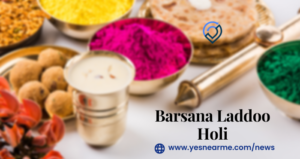
As the laddoos fly through the air, the temple courtyard resonates with devotional songs, rhythmic beats of dhols, and the joyous chants of “Radhe Radhe!”. People dance, sing, and immerse themselves in the celebratory spirit, making the entire event a mesmerizing experience.
A Prelude to Lathmar Holi
Laddoo Holi also marks the beginning of Barsana’s Holi celebrations, leading up to the famous Lathmar Holi—where women playfully beat men with sticks in a re-enactment of a legendary episode from Lord Krishna’s life.
With colors, sweets, and devotion, Barsana Laddoo Holi is a unique spectacle that blends tradition, joy, and spirituality, attracting visitors from all over the world.
QUOTES AND WISHES
- Express your love with colours this Holi and make your love colourful with colours of love.
- Rang ho ya gulaal, maaro pichkari or laa do fuhaar.
Nacho or jhumo, masti se khelo.
Have a colourful and joyous Holi!! - अपनों से अपनों को मिलाती है होली,
खुशियों के रंग लाती है होली,
बरसों से बिछड़ें हैं जो उन सबको मिलाती है होली,
मेरी तरफ से आप सबको हैप्पी होली!
Barsana Lathmar Holi: A Playful Battle of Love and Tradition
One of the most iconic and unique Holi celebrations in India takes place in Barsana and Vrindavan, towns deeply associated with Radha Rani and Lord Krishna. The second day of Holi in the Braj region is celebrated as Lathmar Holi, where women, dressed as Gopis, playfully chase and beat men with lathis (sticks), recreating a legendary episode from the life of Lord Krishna.
The Mythological Significance
According to legend, Lord Krishna, along with his friends (Gops), would visit Barsana from his hometown, Nandgaon, to tease Radha and her friends (Gopis) during Holi. However, the women of Barsana, armed with wooden sticks (lathis), playfully retaliated by chasing them away. This age-old tradition continues to this day, turning into a grand celebration of love, mischief, and camaraderie. In Vrindavan, similar legends of Krishna’s playful Holi celebrations add to the spiritual charm of the festival.
The Grand Celebration
The Radha Rani Temple in Barsana becomes the center of this vibrant and energetic festival. Women, dressed in bright traditional attire, wield decorated sticks, while the men—acting as Krishna’s companions—defend themselves with shields, ducking and dodging the playful strikes. It is said that any man who gets “captured” by the Gopis must dress like a woman and dance in front of everyone, adding to the lighthearted fun.
The Vrindavan atmosphere is electric, with the air filled with devotional songs, dhol beats, and chants of “Radhe Radhe!”. People throw gulal (colored powder), and the streets are painted red, pink, and yellow as the festival reaches its peak. Vrindavan’s Banke Bihari Temple also hosts a special Holi celebration, where devotees are showered with flowers and colors, adding to the divine essence of the festival.
Thandai and Festive Delights
As part of the celebrations, Bhang-laced Thandai, a traditional spiced milk drink, is generously served to locals and visitors. The intoxicating drink adds to the exuberance and energy of the festival, making the experience even more memorable. In Mathura and Vrindavan, sweet delicacies like gujiya and malpua are widely enjoyed, completing the festive spirit.
The Culmination: Nandgaon’s Response
The festivities do not end in Barsana alone. The very next day, the men of Barsana head to Nandgaon, where the women of Krishna’s village retaliate with their own playful “counterattack”, continuing the Holi battle of colors and love. Meanwhile, in Vrindavan, Holi celebrations continue across temples and streets, extending the festive spirit throughout the region.
A Festival of Love and Devotion
Barsana’s Lathmar Holi is not just a spectacle; it is a deeply rooted cultural tradition that celebrates divine love, feminine power, and the joy of togetherness. Thousands of devotees and tourists from around the world gather to witness and participate in this one-of-a-kind Holi experience. In Vrindavan, Mathura, and Barsana, Holi is more than just colors—it is a spiritual journey, where devotion meets revelry in the most colorful and playful way.

QUOTES AND WISHES
- Be a free bird, to play with the vibrant colours of Holi.
- Dil Ne Ek Baar Or Humara Kehna Maana Hai,
Es Holi Pe Phir Unhe Rangne Jaana Hai. - पूर्णिमा का चाँद, रंगो की डोली,
चाँद से उसकी चांदनी बोली,
खुशियों से भर दे सबकी झोली,
आपके जीवन को रंग दे ये होली।
होली मुबारक हो!
LATHMAR HOLI IN NANDGAON
This is the reverse of Barsana Holi. In Nandgaon, this festival is celebrated by men going from Barsana to Nadgaon and getting beatings by women who chase them.
 QUOTES AND WISHES
QUOTES AND WISHES
- Let the colour of Holi spread the colour of peace and happiness.
- Wo Baat Karne Tak Ko Raji Nahi Hai,
Or Hum Holi Par Rang Lagane Ki,
Hasarat Jamaye Baite Hai. - उड़ने दो रंगों को इस बेरंग जिंदगी में,
एक त्यौहार ही तो है जो हमें रंगीन बनाते है।
PHOOLWALON KI HOLI
(VRINDAVAN KI HOLI)
This Holi is celebrated for three days. This is the highlight of Vrindavan! This is the main Holi of Vrindavan and Braj! However, people play this Holi with flowers and drench themselves with colours. After the celebration in the temple, the small kids are made Lord Krishna and Radha. they come in the vehicles to spread colours and throw on the people walking around and reciprocate the same.
 QUOTES AND WISHES
QUOTES AND WISHES
- It’s the time to unwind, de-stress and make a bond with sweets, Thandai and colours.
- Rang Lekar Khelte, Gulal Lekar Khelte,
Radha Sang Holi, Nand Lal Khelte.
Bolo Sara Rara Ra.
Happy Holi! - अपने हाथो से खुद को रंग लगा लेती हूँ,
तेरी गैर-मोजूदगी में यूँ ही होली मना लेती हूँ।
WIDOW’S HOLI
People join the widows and play Holi with them. However, Ladies stayed in the Pagal baba ashram and devote their life to god and spirituality after being banished from home. This Holi is played every year in the Gopinath temple of Vrindavan.
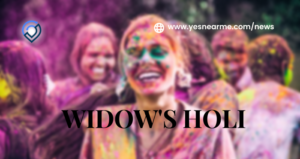 QUOTES AND WISHES
QUOTES AND WISHES
- Water balloons, water pistols, amazing songs, and delicious gujias are the main ingredients for a perfect Holi.
- Neela, Peela, Hara, Gulaabi Yeh Sab to Ek Bahaana Hain,
Hame to Tumse Milne Aana Hai,
Es Holi Pe Unhe Rangne Jaana Hain,
Dil Ne Ek Baar Phir Humara Kehna Mana Hain.
Holi Haiiiii - रास रचाये गौकुल में कन्हैया,
होली में बन जाये रंग रसिया,
सजाये रंगों का साज हर एक द्वारे,
आज भी गोपियाँ रंग लिए कान्हा की राह निहारे।
होली की मंगल शुभकामनायें!
HOLIKA DAHAN
Vrindavan Holika Dahan is witnessed at the gate of Mathura when the effigies are burnt of Manmatha. People from other parts of Vrindavan also celebrate Holika Dahan. However, this festival is celebrated to burn the negative thoughts and give yourself a positive start.
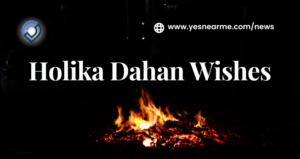
QUOTES AND WISHES
- Happy Holi from mine to yours. Hope you have a colourful day and a colourful life with all kinds of right twists in the colour.
- Makki ki Roti, Nimbu ka Aachar, Suraj Ki Kirne, Khushiyo ki Bahar, Chand Ki Chandi, Apno ka Pyar, Mubarak Ho Aapko, Holi ka Tyohar. Happy Holi!
- रंगो का त्यौहार है होली,
थोड़ी ख़ुशी मना लेना,
हम थोड़ा दूर है आपसे,
जरा गुलाल हमारी तरफ से भी लगा लेना।
Dhulandi Holi at Dwarkadhish Temple: The Grand Culmination of Colors and Devotion
The final and most awaited day of Holi in Mathura and Vrindavan is celebrated as Dhulandi Holi, also known as Dhulivandan. This marks the actual day of Holi, bringing together thousands of devotees and tourists at the historic Dwarkadhish Temple in Mathura. It is a day of unparalleled joy, spiritual ecstasy, and vibrant festivities, making it one of the grandest Holi celebrations in Braj, Mathura, and Vrindavan.
The Spiritual Significance
Dhulandi Holi signifies the victory of good over evil, the arrival of spring, and the divine love of Lord Krishna and Radha. The Dwarkadhish Temple, dedicated to Lord Krishna in his Kingly form, becomes the focal point of celebrations as devotees gather to offer prayers, sing bhajans, and immerse themselves in the colors of devotion. Similarly, Vrindavan, known as the land of Radha and Krishna, witnesses grand Holi celebrations in various temples, where the divine love of the deities is celebrated with great enthusiasm.
The Grand Celebration at Dwarkadhish Temple
- Early in the morning, devotees flock to the temple premises in Mathura and Vrindavan, dressed in white, ready to be drenched in the kaleidoscope of Holi colors.
- The air is filled with clouds of gulal (colored powders), turning the temple courtyards into mesmerizing displays of pink, yellow, red, and green hues.
- Traditional dhol beats and Holi songs set the rhythm for an energetic dance, where people rejoice, sing, and celebrate the festival with boundless enthusiasm.
- Bhang-laced Thandai, a festive drink made with milk, spices, and cannabis, is enjoyed by many, adding to the revelry and enhancing the joy of the celebration.
- Devotional chants of “Radhe Radhe” and “Jai Shri Krishna” echo through the temples of Mathura and Vrindavan, uniting devotees in divine bliss and devotion.
Holi Beyond the Temple: A Celebration Across the City
The Dhulandi Holi celebrations are not just confined to the Dwarkadhish Temple. The entire cities of Mathura and Vrindavan transform into a colorful wonderland, with people smearing colors on each other, dancing to folk music, and sharing sweets like gujiya and malpua. The streets, ghats, and marketplaces come alive with joyful processions, where devotees and visitors celebrate Holi in the true spirit of love, unity, and festivity. In Vrindavan, the Banke Bihari Temple hosts special Holi celebrations, where priests shower devotees with flowers and colors, creating an atmosphere of divine ecstasy.
A Fitting Conclusion to the Holi Extravaganza
As the sun sets over the holy cities of Mathura and Vrindavan, Dhulandi Holi marks the culmination of the week-long Holi celebrations of Braj. It leaves behind a trail of happiness, togetherness, and devotion, making it a once-in-a-lifetime experience for those who witness it.
For devotees and tourists alike, Holi at the Dwarkadhish Temple and Vrindavan’s temples is not just a festival—it is a spiritual journey into the heart of Krishna’s divine love, a celebration of life itself, and an unforgettable spectacle of colors and joy.
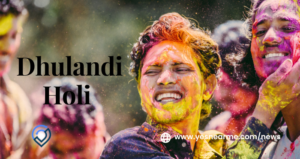 QUOTES AND WISHES
QUOTES AND WISHES
- Accordingly, Even though I am far away from you on the happy occasion of Holi, all my thoughts and good wishes are with you.
- Rang udaye Pichkari rang se rang jaye duniya sari,
Holi ke rang aapke jeevan ko rang de,
Ye shubhkamana hai hamari.
Happy Holi! - सुना हैं होली आ रही हैं, गोपियों हमसे जरा संभल के रहना,
क्युकी कृष्ण जी गालों पे रंग लगाकर दिल का रंग चुरा लेते हैं।
Huranga Holi: The Grand Finale of Braj’s Colorful Festivities
After the vibrant and playful celebrations of Holi and Lathmar Holi, the Huranga Holi takes the festivity to another level. This unique tradition is celebrated on the day after Holi, primarily at Dauji Temple, near Mathura, where the revelry reaches its peak. Unlike other Holi celebrations, Huranga Holi is known for its intense yet playful customs, where men are not only playfully beaten but also stripped of their clothes as part of the joyous tradition.
The Significance of Huranga Holi
Huranga Holi is a symbol of playful love and devotion, continuing the spirit of the divine romance between Lord Krishna and Radha. It is said that after teasing and playing Holi with Radha and the Gopis, Krishna and his friends were chased away by the women, an act that evolved into the traditions of Lathmar Holi and later, Huranga Holi.
At the Dauji Temple, dedicated to Lord Balarama, the elder brother of Lord Krishna, this unique celebration takes place. Here, the men of the family or community are targeted by the women, who playfully strip them of their upper garments as a sign of fun and surrender, turning the entire event into an uproarious spectacle of laughter and joy.
The Celebration: A Riot of Colors and Exuberance
- Women, armed with colorful buckets of water and vibrant gulal (colored powders), drench the men, symbolizing the playful love and teasing nature of Radha and Krishna.
- Men try to defend themselves, but as per tradition, they often fail and get caught, leading to the hilarious stripping of their upper garments, which are then torn and waved in the air as flags of victory.
- The entire courtyard of the temple turns into a riot of colors, with dhol (drums) beating, devotional songs echoing, and people dancing in a frenzied celebration of divine love.
A Festival Beyond Compare
Adding to the excitement, people jump into ponds and pools filled with colored water, enjoy bhang-laced Thandai, and dance with abandon as the festival comes to an end. Unlike other Holi celebrations across India, where the festival lasts a day or two, in Braj and Vrindavan, Holi is a week-long extravaganza, unmatched anywhere in the world.
Huranga Holi marks the grand conclusion of this spiritual and playful celebration, leaving behind memories of joy, unity, and devotion. With its unique traditions and boundless energy, it is an experience that draws thousands of visitors from all over the world, making it one of the most extraordinary Holi celebrations in India.
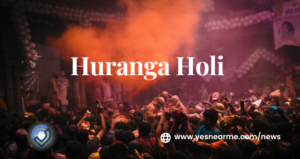 QUOTES AND WISHES
QUOTES AND WISHES
- You are the colour of my life, and you are the reason for my smile. However, I make a colourful dream just for you. However, we send you colourful wishes on Holi.
- Mere dil ki shubhkamna,
Ki tum raho sada khush,
Tumhari Holi ho rangeen,
Aur har ek din ho sada haseen.
Happy Holi! - उठाकर हाथों में पिचकारी,
कृष्ण जी के रंग से रंग दो दुनिया सारी।
VRINDAVAN KI HOLI CONCLUSION
The Holi of Vrindavan and Braj is once in a lifetime experience. However, this is the best Holi one could ever celebrate.
Accordingly, This region celebrates Holi with much ardour and exclusive festivities. Accordingly, it is certainly the ideal place to be.
However, with colours and naughtiness in the air, thus aromatic sweets and happy colourful faces of people everyone wishes to be a part of this amazing extravaganza.
Accordingly, A vibrant event is carried out through the streets of the town and villages from Vishram Ghat to Holi Gate every year. A day after Dhulivandhan, they pick up at Dauji Temple outside the city.
However, women rip off men’s clothes and beat them with their own torn-up garb. Apparently, it is actually fun as the beating up is quite friendly.
I HOPE YOU LIKED READING THIS ARTICLE
BUT DO VISIT THIS ARTICLE TO
FOR MORE INFO
